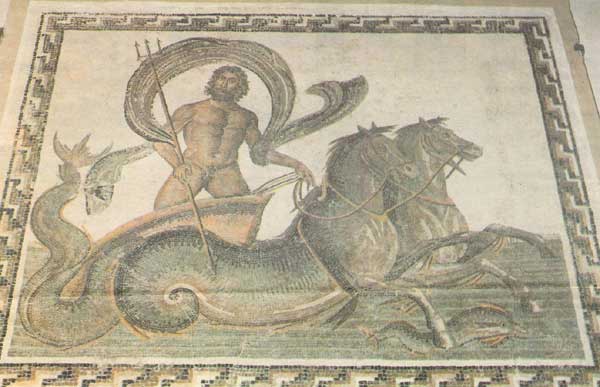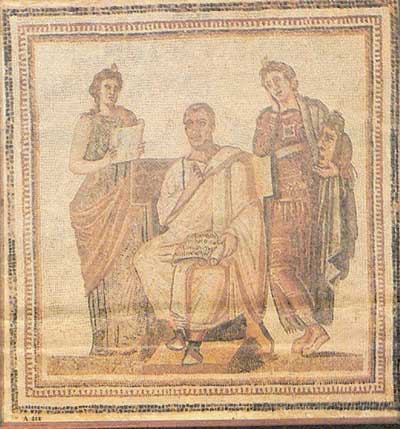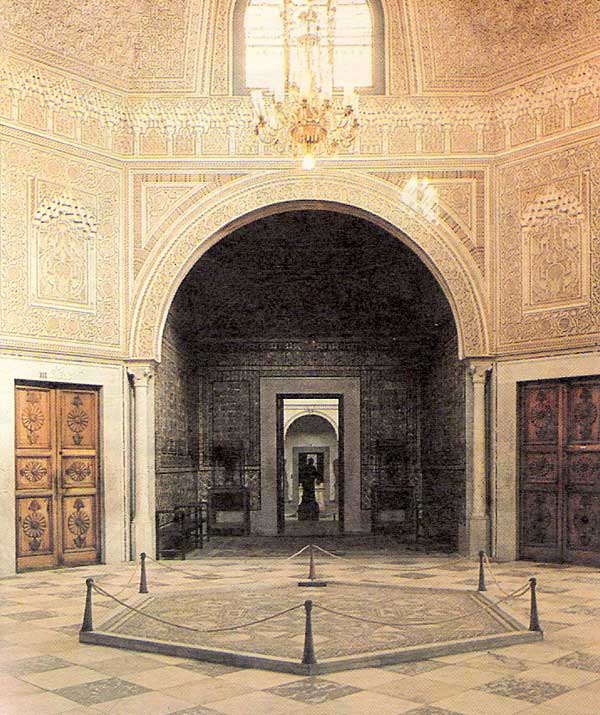Created in 1882, the museum was officially opened on May 7, 1888. It was first called the Alaoui Museum after Ali Bey. After independence in 1956, the museum was renamed Bardo after the area of Tunis where it is located.
The Bardo has five departments, each housing artifacts of a different period of Tunisia’s history: pre-historic, Punic, Hellenic, Roman, Arab and Muslim periods. Its vast rooms, corridors and galleries house collections of archaeological finds and historical and ethnographical objects from famous sites such as Carthage, Dougga, Sousse, Qayrawan.
The general layout of the museum is designed to help the visitor follow a chronological route. The first rooms present the pre-history and protohistory of Tunisia. The collections of incised silica, bone, decorative objects and engraved stone illustrate the Acheulean, Mousterian, Ibero¬Maurusian, Capsian and Neolithic civilizations, and show that Tuni¬sia has been inhabited ever since the dawn of human history.
The museum’s collection spans six centuries of history ¬from the 8th to the 2nd century BC.
Some of the objects exhibi¬ted date before Rome des¬troyed Carthage in 146 BC. A large section of the building is taken up with the Roman and early Christian collections: sculp¬tures, steles, lamps, and glass and bronze objects. Two beautiful sarcophagi from Carthage, one of which depicts the Nine Muses and the other the Four Seasons in the guise of young boys are noteworthy, as is the well-known Borj el Amri funerary statue of a countryman from the vicinity of Carthage, portrayed with the attributes of Hercules, wearing the Nemean lion skin and initiated in the cult of Ceres. The altar of the Gens Augusta is another master¬piece that deserves special men¬tion.
The Bardo Museum contains the finest collection of Roman mosaics in the world. There is a mosaic panel depicting the great Latin poet Virgil, holding a scroll on which is writ¬ten the eighth verse of the Aeneid, and accompanied by Clio, the Muse of History and Melpomene, the Muse of Tragedy. The only portrait of Virgil in existence was found in a house near Sousse dating from the third century A.D.
The subject of the famous Dougga mosaic is also mythologi¬cal. It depicts Ulysses from an episode from the Odyssey, tied to the mast of his ship and enduring the song of the sirens, while his com¬panions have blocked their ears.
The Islamic objects are housed in a small building surrounding a patio that is typical of Tunisian Arab-Muslim architecture. The building was completed in 1831, and in 1851 a larger building was constructed alongside it. A vast hall contains objects dating from the ninth to the thirteenth century. A rich collection of parchment manuscripts, verses from the Qur’an and fiqh books show how Arabic calligraphy evol¬ved. Most of the documents on exhibi¬t in the Bardo come from the Mosque of Qayrawan. The Bardo also possesses a vast collection of textiles decorated with ins¬criptions; objects made of decora¬ted glass from the region of Qayrawan, gold jewellery from Tarabia dating from the eleventh century, ceramic ware, coins, astrolabes and various other collections from the Muslim East.
Reference: Tunisia News, Weekly Newspaper,1995.




